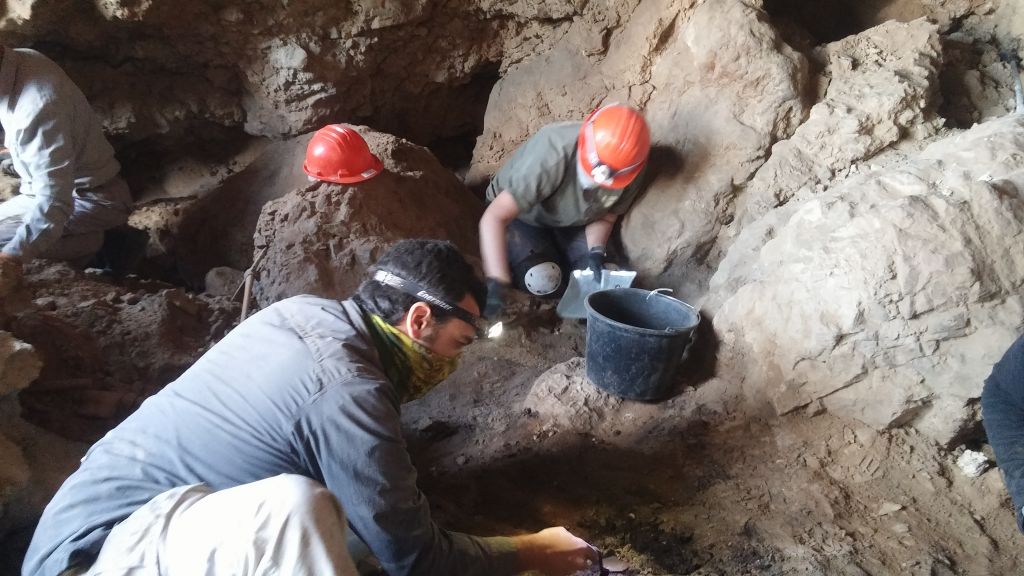Share This Article
Archaeologist Ahiad Ovadia digs carefully in cave 12 near Qumran. (Casey L. Olson and Oren Gutfeld, Hebrew University). Photo timesofisrael.com
Technology originally developed for NASA has revealed letters invisible to the naked eye on fragments of the 2,000-year-old Dead Sea Scrolls, officials announced Tuesday, reported NBC news.
The scrolls were discovered in the 1950s by archaeologists and Bedouin in caves near Qumran — on the West Bank near the Dead Sea — and include tens of thousands of parchment and papyrus fragments that are thought to belong to approximately 1,000 different manuscripts.
The Israel Antiquities Authority said examinations of some fragments that had not previously been sorted or deciphered due to their “small size and precarious physical state” uncovered new script and pointed to the existence of an unknown manuscript.


One of the Dead Sea Scroll fragments is examined at the Israel Antiquities Authority’s lab.Shai Halevi/The Leon Levy Dead Sea Scrolls Digital Library.
As part of a project to digitize the scrolls, researcher Oren Ableman examined a few dozen fragments and discovered “traces of ink on many fragments that appeared blank to the naked eye,” the authority said in a statement.

Before and after using NASA technology.Photo: Shay Halevy, Israel Antiquities Authority
One of those fragments could not be attributed to any known manuscripts, raising the possibility that it belongs to a still unknown text.
Other fragments have been identified as belonging to the Books of Deuteronomy, Leviticus and Jubilees.
One is from the Temple Scroll, while another has been identified as belonging to the Great Psalms Scroll.
The authority said the fragments “provide new insights” to researchers studying the scrolls.
The study was presented Tuesday at the Israel Museum at the 70th International Conference of the Dead Sea Scrolls in the Desert of Penon Derech, in cooperation with the Orion Center for the Study of the Dead Sea Scrolls at the Hebrew University of Jerusalem. – York.
The digitization project of the Israel Antiquities Authority’s Dead Sea Scrolls Unit was established to monitor the state of preservation of one of the most important archaeological discoveries of the 20th century, and to make it accessible to the public at the best possible quality.
The manuscript was discovered after Oren Evelman, a researcher of the Antiquities Authority’s Scrolls Unit and a doctoral student at the Hebrew University of Jerusalem, conducted an initial inspection of dozens of sections of a cave near Qumran, known as Cave 11,and the discovery revealed signs of writing in many of the sections – signs that are not recognizable in the eye – after a thorough study, publinshed today. Oren succeeded in deciphering the handwriting and even identifying the manuscripts to which he apparently belongs.
Religious Tourism
Sources:
- nbcnews.com
- 20il.co.il
 The Great Psalms Scroll together with the new fragment featuring Psalm 147:1.Shai Halevi/The Leon Levy Dead Sea Scrolls Digital Library
The Great Psalms Scroll together with the new fragment featuring Psalm 147:1.Shai Halevi/The Leon Levy Dead Sea Scrolls Digital Library

